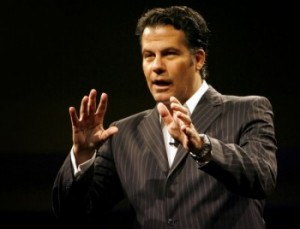WEST PALM BEACH, FLA–Richard Florida, the author of the “Rise of the Creative Class,” has long remarked upon the creative class’ penchant for living in certain cities rather than others. He has devoted much of his energy over the past 10 years to illuminating the importance of a community’s tolerance for cultural diversity and its openness to newcomers as a trait valued by the creative class. But there has always been as sub-theme in his writing. Creatives also are drawn to cities with a vibrant urban fabric.
In my own Virginia-centric writing about economic development in knowledge economy, I have drawn upon Florida’s insights about the creative class to argue that one of the challenges facing Virginia’s metro regions is creating an environment where creatives want to live. And I have turned to the work of the New Urbanists for insight into how to create more livable and sustainable communities.
Thus, it was a source of great delight to hear Florida address the 2012 Congress for New Urbanism this afternoon here in West Palm Beach. Florida and various New Urbanism luminaries had crossed paths before, but this was the first time he ever participated in a CNU event. Most of his remarks were vintage Florida, familiar to anyone who has read his books. But he threw out fresh meat to creative class junkies like myself by sharing the results from some of his recent research.
Florida’s original insight was that corporations are not the key drivers of economic growth and development. Members of what he calls the “creative class” — those artists, scientists, educators, entrepreneurs, professionals and solvers of complex problems who comprise roughly 30% of the workforce and account for the vast majority of innovation in our society and economy — drive economic development. Corporations follow the talent. They do business where they can gain access to people with the skills they are seeking. Additionally, when creative people mix, mingle and combine ideas, they ferment entrepreneurial opportunities, generating new enterprises from the ground up.
The moral of the story: Rather than recruit corporations and corporate investment directly, regions should focus on creating an ambiance that attracts and retains the creative class. For the most part, creatives aren’t looking for the traditional cultural status symbols like stadiums, convention centers, symphonies and ballets. They are looking for cool neighborhoods with vibrant street culture and “authenticity,” an urban fabric rooted in the city’s unique history and culture, as opposed to the sterile mall culture of chain stores and restaurants.
Florida identifies three primary things that give people purpose, meaning and happiness in life. First is family, friends and social relationships. Second is the ability to perform creative work. And third is the place where they live. Sure, everyone wants low crime, good schools, a clean environment and the presence of arts and culture. But two traits drive strong emotional attachment to a region. According to Florida’s recent research, the second most important factor is tolerance — openness to diversity regardless of race, religion, ethnicity and sexual preference. The most important is the community’s aesthetics, beauty — what he calls the “quality of place.”
The quality of place is something that the New Urbanists think about day and night, and their influence upon Florida’s thinking is clear. In Florida’s mind, quality of place is influenced by a number of factors: (1) the degree to which a city (or region) has valued and preserved its history and heritage; (2) the extent to which neighborhoods are walkable, have mixed uses and offer transportation alternatives, (3) the depth of community investment in arts and culture, including popular art and music, not just the high-brow stuff, and (4) the integration of the natural and built environment in a way that’s accessible to the population. Thus, things like parks, rivers and tree canopy assume far more importance than traditional economic developers would ever imagine.
As I consider my home town of Richmond, these things all ring true to me. That’s why I’ve been blogging recently about building murals, indie bands and art districts as a sign of Richmond’s cultural renaissance and eventual entrepreneurial rebound. There will always be a role for recruiting corporate headquarters, back offices and manufacturing facilities. But, as Richmond has discovered the hard way, corporations come and go. Traditional economic development must be accompanied by community development — creating the “great places” that attract and retain society’s wealth creators. Richmonders are making that transition in thinking, but they are not fully there yet. I’ll do what I can to nudge them in the right direction.



